Abstract
Following development of polioencephalomalacia in one of 105 cattle in a farm in southeastern Saskatchewan, a study was initiated to monitor thiamine (B1) and copper (Cu) status, and to evaluate interactive nutritional factors which may have been responsible for this occurrence. It was evident that a combination of high sulfur (S) and low Cu intake was responsible for the depletion of blood B1 and plasma Cu. Supplementation with trace minerals alone resulted in a significant (p<0.05) improvement in both B1 and Cu status of the herd. We recommend that herds exposed to high intakes of S be supplemented with Cu up to 50 mg/kg feed dry matter to alleviate potential deficiencies of B1 and Cu.
Full text
PDF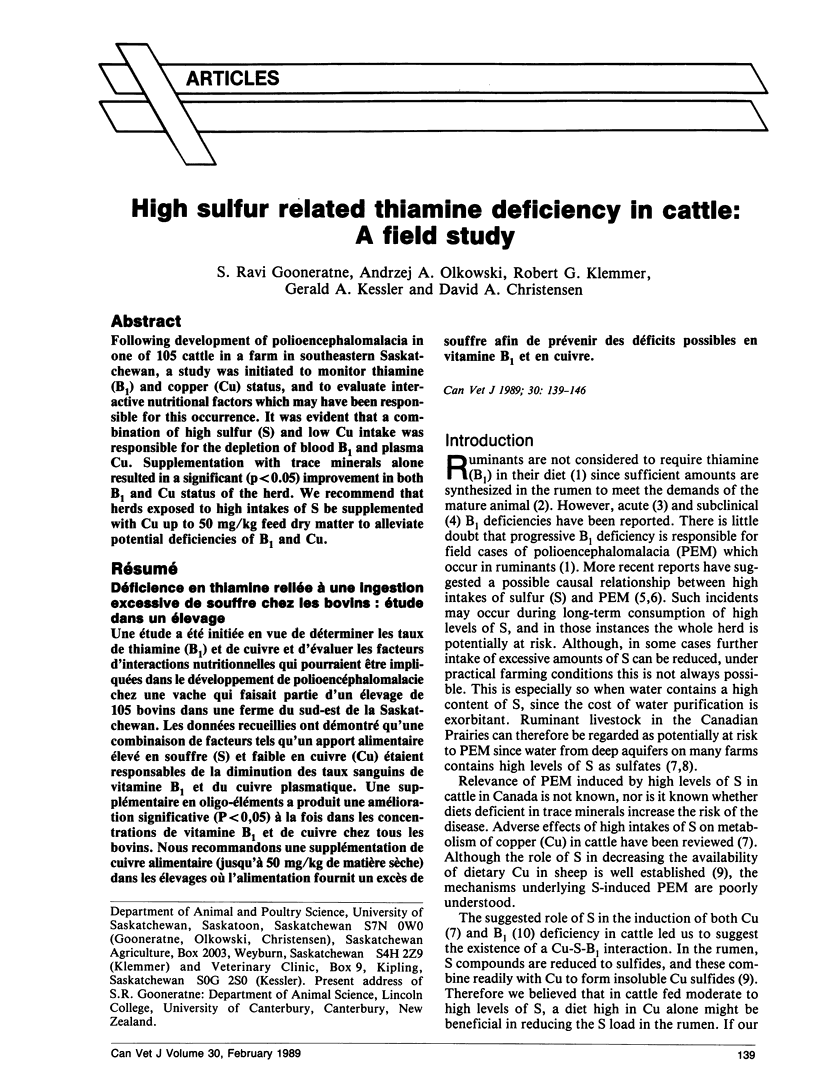
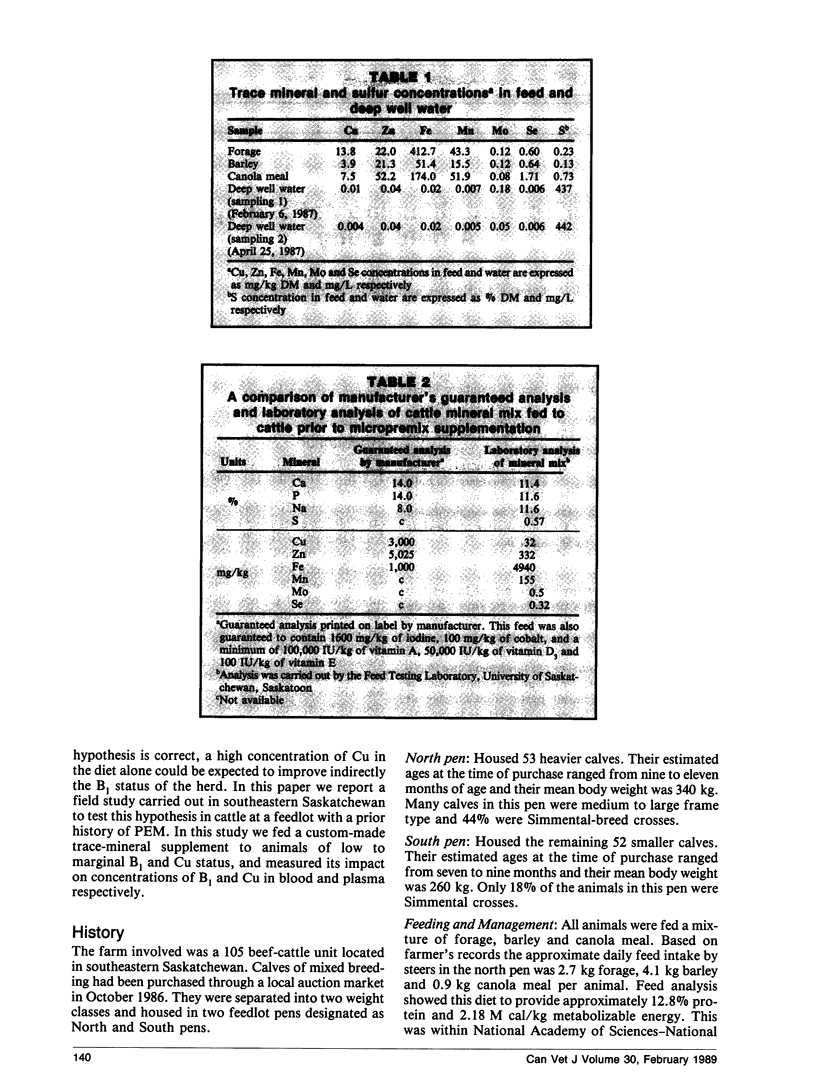


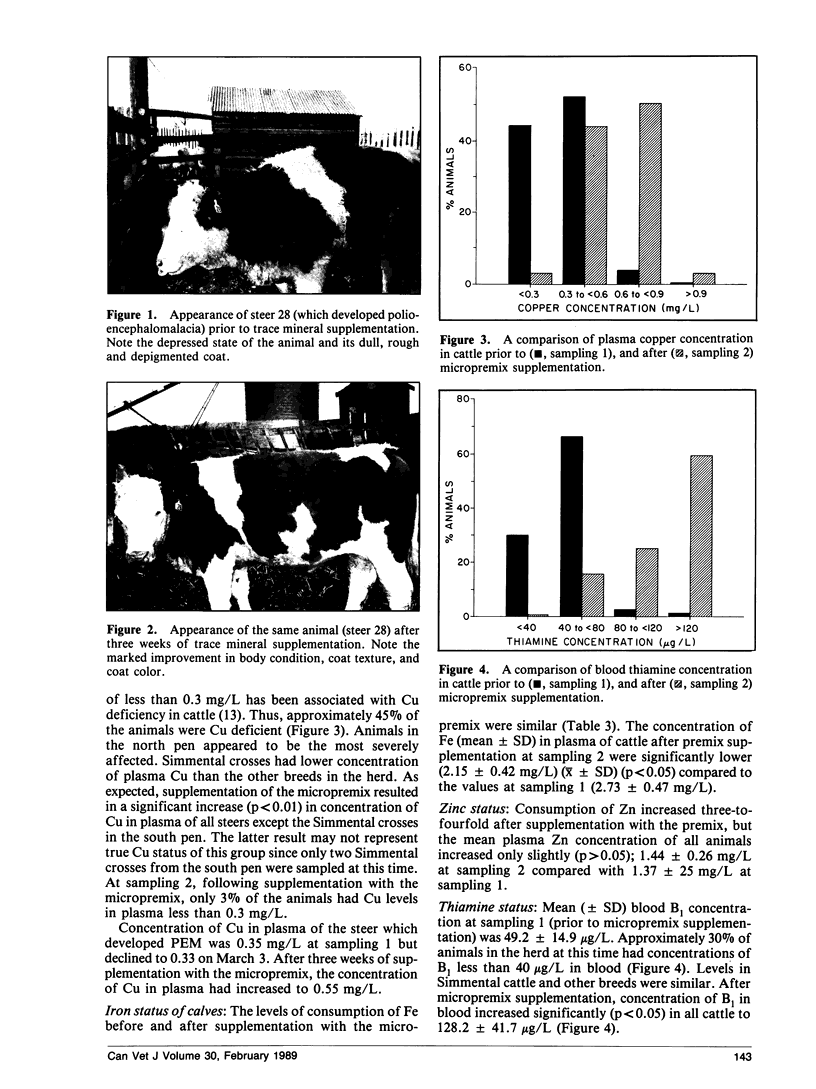

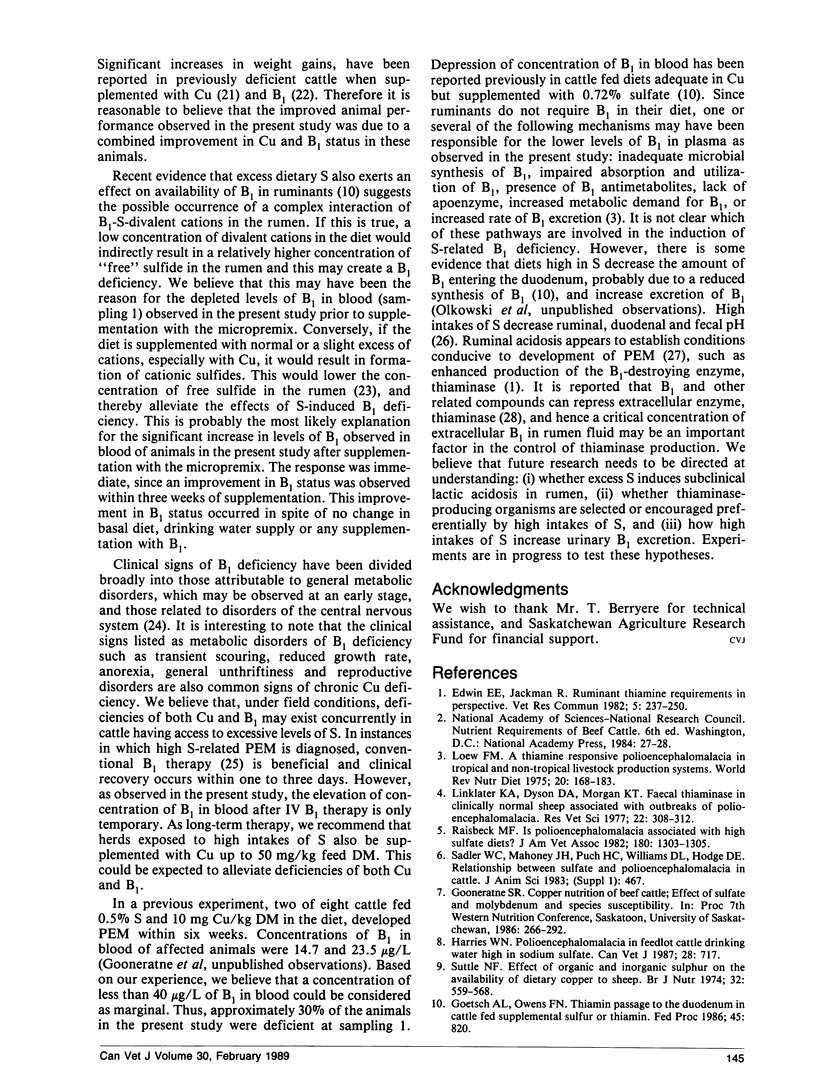
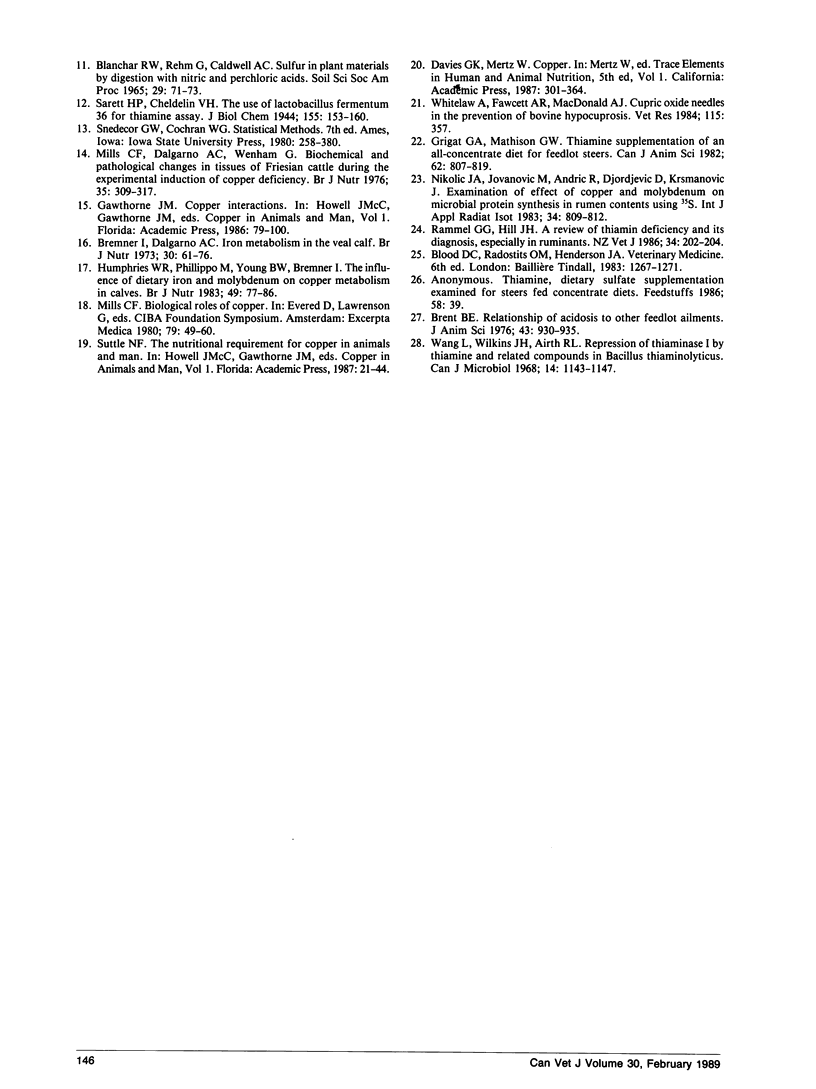
Images in this article
Selected References
These references are in PubMed. This may not be the complete list of references from this article.
- Bremner I., Dalgarno A. C. Iron metabolism in the veal calf. 2. Iron requirements and the effect of copper supplementation. Br J Nutr. 1973 Jul;30(1):61–76. doi: 10.1079/bjn19730008. [DOI] [PubMed] [Google Scholar]
- Brent B. E. Relationship of acidosis to other feedlot ailments. J Anim Sci. 1976 Oct;43(4):930–935. doi: 10.2527/jas1976.434930x. [DOI] [PubMed] [Google Scholar]
- Cross-Canada disease report. Can Vet J. 1987 Nov;28(11):717–717. [PMC free article] [PubMed] [Google Scholar]
- Edwin E. E., Jackman R. Ruminant thiamine requirement in perspective. Vet Res Commun. 1982 May;5(3):237–250. doi: 10.1007/BF02214990. [DOI] [PubMed] [Google Scholar]
- Humphries W. R., Phillippo M., Young B. W., Bremner I. The influence of dietary iron and molybdenum on copper metabolism in calves. Br J Nutr. 1983 Jan;49(1):77–86. doi: 10.1079/bjn19830013. [DOI] [PubMed] [Google Scholar]
- Linklater K. A., Dyson D. A., Morgan K. T. Faecal thiaminase in clinically normal sheep associated with outbreaks of polioencephalomalacia. Res Vet Sci. 1977 May;22(3):308–312. [PubMed] [Google Scholar]
- Loew F. M. A thiamin-responsive polioencephalomalacia in tropicaland nontropical livestock production systems-1. World Rev Nutr Diet. 1975;20:168–183. [PubMed] [Google Scholar]
- Mills C. F., Dalgarno A. C., Wenham G. Biochemical and pathological changes in tissues of Friesian cattle during the experimental induction of copper deficiency. Br J Nutr. 1976 May;35(3):309–331. doi: 10.1079/bjn19760039. [DOI] [PubMed] [Google Scholar]
- Raisbeck M. F. Is polioencephalomalacia associated with high-sulfate diets? J Am Vet Med Assoc. 1982 Jun 1;180(11):1303–1305. [PubMed] [Google Scholar]
- Rammell C. G., Hill J. H. A review of thiamine deficiency and its diagnosis, especially in ruminants. N Z Vet J. 1986 Dec;34(12):202–204. doi: 10.1080/00480169.1986.35350. [DOI] [PubMed] [Google Scholar]
- Suttle N. F. Effects of organic and inorganic sulphur on the availability of dietary copper to sheep. Br J Nutr. 1974 Nov;32(3):559–568. doi: 10.1079/bjn19740109. [DOI] [PubMed] [Google Scholar]
- Wang L., Wilkins J. H., Airth R. L. Repression of thiaminase I by thiamine and related compounds in Bacillus thiaminolyticus. Can J Microbiol. 1968 Oct;14(10):1143–1147. doi: 10.1139/m68-191. [DOI] [PubMed] [Google Scholar]
- Whitelaw A., Fawcett A. R., Macdonald A. J. Cupric oxide needles in the prevention of bovine hypocuprosis. Vet Rec. 1984 Oct 6;115(14):357–357. doi: 10.1136/vr.115.14.357. [DOI] [PubMed] [Google Scholar]




